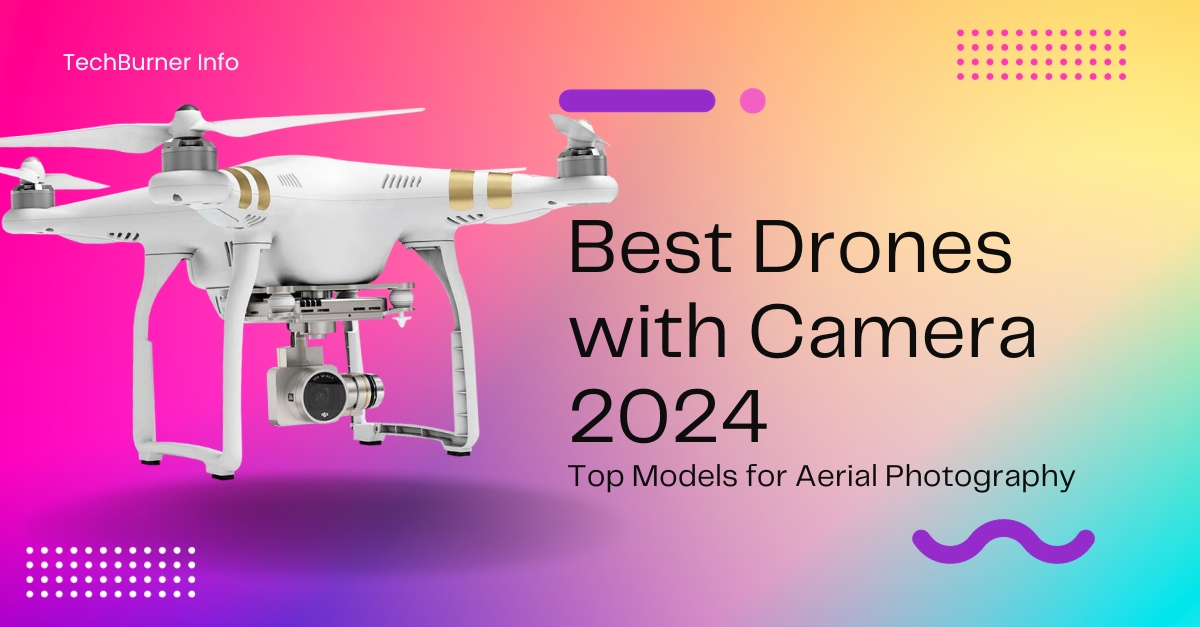Best Drones with Camera 2024: Photographers and videographers can discover entirely new opportunities with the finest camera drones. These advanced aircraft are controlled from the ground and have one or more onboard cameras for taking pictures and films while you are in the air. Modern technology has fostered high-end drones with cameras to match or surpass 5K video quality. These drones also offer conventional camera capacities like interchangeable lenses and adjustable apertures.
Many of the safety features that modern drones offer will also reassure those new to drone flight. Drones with integrated sensors for crash avoidance, GPS tracking, return-to-home features, and automatic flight paths are available, depending on your budget.
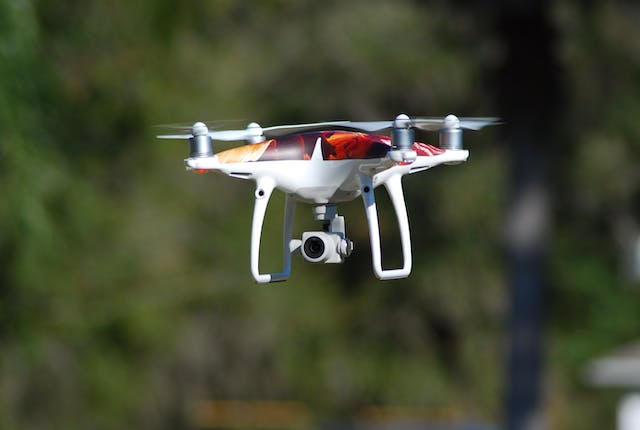
For those just starting with drones, we recommend perusing our beginner’s guide to drone videos and our compilation of the top drones for beginners to help you get started.
Why Choose Drones for Beginners
Drones with cameras are a superb choice for newbie users due to their increasing popularity, accessibility, and educational and recreational potential. The following are some binding considerations:
Educational Opportunities:
Beginners can memorize code and enrich their programming mastery because many drones can be programmed. You can learn aerodynamics and flight concepts all at once.
Recreational Enjoyment:
Drones fitted with cameras have flared up new outlooks for beginners concerning aerial photography and videography. Generating aerial videos or capturing stunning scenery images could be imaginative and amusing fun. The popularity of drone racing as a hobby has increased.
Essential Features of Drones with Cameras for Beginners
A few essential elements are necessary for beginner drones with cameras to ensure a positive and simple user experience. The following are some crucial points to consider:
Stability:
- GPS and Altitude Hold: Drones equipped with GPS technology are simpler to operate for novices. Height hold functions help reduce the risk of crashes by maintaining a steady height for the drone.
- Stabilization Systems: Search for drones with integrated stabilization systems to reduce unwanted motions and vibrations during flight.
Comfort of Use:
- Intuitive Controls: Look for drones with responsive and straightforward controls so users can focus on shooting photos rather than wasting time figuring out complex motions.
- Automatic flight modes: Waypoints, Follow Me, and Return to Home (RTH) are just a few of certain drones’ pre-programmed flying modes.
Camera Specifications:
- Resolution: A camera with a minimum resolution of 1080p is a decent place to start for novices.
- Stabilization: For fluid, shake-free video, a camera with built-in stabilization, like a gimbal, is essential.
- Live Video Feed: When using a drone that feeds a live video feed to a smartphone or specialized monitor, users may see what the drone’s camera views in reality. This is useful for navigating and framing photos.
Top Drones for Beginners
1. DJI Mavic 3 Pro
DJI Mavic 3 Pro’s wide-angle camera can now record up to one billion colors on the sensor thanks to the new 10-bit D-Log M color mode. This not only helps the camera record more challenging scenes like sunrises and sunsets, but it also makes processing the captured.

Features:
- Maximum flight duration: 43 minutes
- Distance of transmission: up to 15 kilometers
Camera:
- 1/1.3-inch CMOS Similar to 70mm, 3x Optical Zoom, f/2.8, 48 MP;
- 1/2-inch CMOS Tele Camera, corresponding to 166mm, 7x Optical Zoom, 28x Hybrid Zoom, f/3.4, 12 MP;
- Video: 4K/60fps
Pros
- Amazing camera setup
- Powerful drone that remains steady in strong winds
- Exceptional longevity of batteries
Cons
- High cost
- RC Pro controller is required.
2. DJI Mini 4 Pro
With an improved camera, a redesigned chassis, and the addition of omnidirectional obstacle avoidance sensors, this is an improved Mini 3 Pro.

In certain regions, the sub-250g category holds significance as it is situated where regulatory difficulties are less common. In areas like Europe, this is a huge deal; in places like the US, not so much.
Nevertheless, the Mini 4 Pro is a mighty drone you can carry on your travels and fit into your pocket.
Features:
- Maximum video recording speed: 4K at 100 frames per second;
- Maximum Flying duration: 34 minutes;
- Transmission range: 20 kilometers
Camera:
- 1/1.3-inch 24-mm wide-angle camera
Pros:
- Compact and light-weight
- Superb 4K camera
- Incredibly simple to fly
- Omnidirectional sensors
Cons:
- Pricey in comparison to the Mini 3
- An additional DJI RC smart controller is required.
3. DJI Air 3
There’s only one drone to consider if you are searching for an enthusiast-level drone with prosumer features: the Air 3.
The medium telephoto camera on the Air 2S will allow you to go closer to your subjects in a platform you will be acquainted with, so if you currently possess one, this could be the ideal upgrade. If you are coming from a DJI Mini drone, this will provide you with many more opportunities to express your creativity in the air.

Features:
- Maximum flight time: 46 minutes
- Transmission distance: 20 km
Camera:
- 1/1.3 inch CMOS, 48 megapixels
- 1-3x digital zoom and 1/1.3 inch CMOS
- 48 megapixels
- 3-9x digital zoom
Pros:
- Sensors for omnidirectional obstacle avoidance
- Two cameras
- Outstanding quality of the camera
- Fantastic flight duration
Cons:
- Quite a big drone—certainly not something you could slip into your pocket
4. DJI Mini 3
With a potential range of 10 km—far beyond anything you should ever take—and a rated flight time of 38 minutes using the accompanying battery, the DJI Mini 3 is a flying, stabilized 4K/12-megapixel camera.

Additionally, a “Fly More Combo” option is available, which includes two more 38-minute Intelligent Flight Batteries, a shoulder bag, spare propellers, a two-way charging hub, and a few other items.
Key Features:
- Maximum flight time: 38 minutes when using an IFB; 51 minutes when using an IFB Plus
- Transmission range: 10 km
Camera:
- 1/1.3-inch CMOS
- 12-megapixels
- Video: 4K
Pros:
- Compact and lightweight
- Reasonably priced
- Fantastic camera
- Simple to fly
Cons:
- Its lightweight construction makes it a bad option in windy circumstances.
- Absence of obstacle avoidance sensors
5. Autel Evo Lite+
The Evo Lite+ competes with the Air 2S as the flagship drone from Autel’s most recent lineup of DJI rivals. Its specs are strikingly identical, including a 1-inch sensor that can capture 5.4K video at 30 frames per second. With its 40-minute flight time and customizable aperture, it also outperforms the Air 2S and the Mavic Pro 2. Because the Lite+ model’s sensor has bigger pixels, it can capture more light in low light.
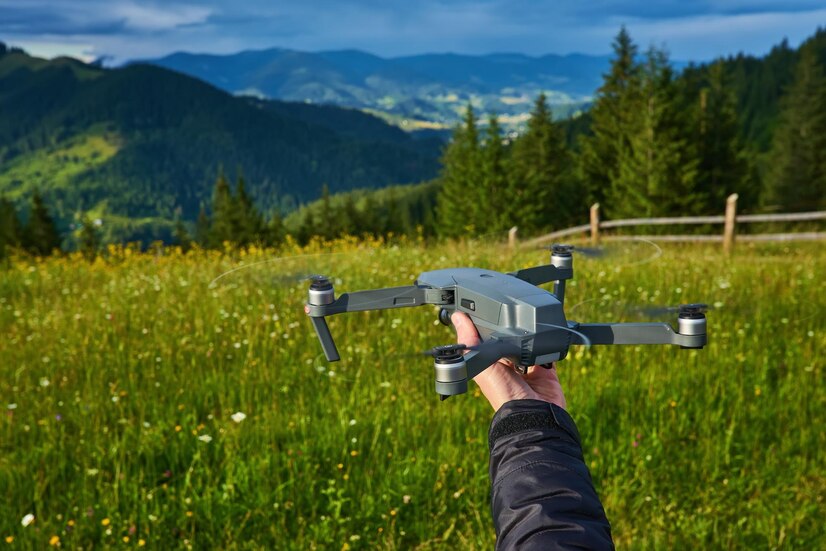
Its 20MP sensor is arguably the most incredible drone camera currently on the market for the money, giving the Air 2S some fierce competition.
Key Features:
- Weight: 835g
- Maximum Flight time: 40 minutes
- Transmission Range: 12KM
Camera:
- 20MP ranging from f/2.8 to f/11
Pros:
- One-inch sensor with a 40-minute flight duration
- An adjustable aperture
Cons:
- More expensive than the Air 2S
- No D-Log profile
6. DJI Mavic 3 Classic
Most videographers will find that 5.1K footage captured in Normal, HLG, and 10-bit profiles is more than enough. Additionally, the bigger sensor allows for excellent noise handling throughout the whole ISO range. This is the most incredible folding drone camera currently on the market, and it still has the fantastic 4/3 primary sensor.
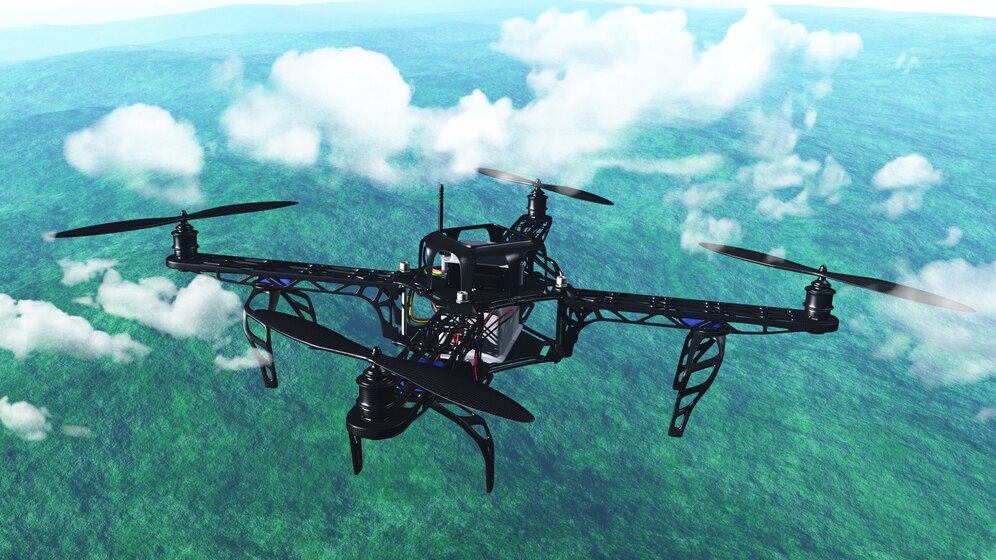
The flight and safety features of the original Mavic 3 models are also included. The Mavic 3 Classic is the finest option if you’re looking for a foldable drone with the highest image quality.
Key Features:
- Weight: 895g
- Maximum Flight Time: 46-minute
- Transmission Range: 15 kilometers
Camera:
- Hasselblad 20MP 4/3 camera
Pros:
- Superb Hasselblad sensor
- Awesome safety features
Cons:
- This is still a pricy alternative.
- Shorter flight duration than stated
7. Ryze Tello
First-time drone fliers will enjoy the Ryze Tello because it is lightweight, simple, and reasonably priced. The Tello is an inexpensive device, but it packs a lot of features: its battery lasted for a respectable 13 minutes during testing, and its downward-facing light sensors let it hover and carry out a few programmed tricks.

Still, the app was surprisingly straightforward. It provides an easy-to-use on-screen twin-stick system that makes controlling the Tello rewardingly responsive.
Flying the Ryze Tello on a quiet day is fun since it moves quickly and responds quickly to intuitive inputs.
Key Features:
- Weight: 80g
- Maximum Flight time: 13 minutes
- Transmission Range: 100m
Camera:
- Nose-mounted 5MP
- 720p HD video
Pros:
- Sensitive flight controls
- Small and light
Cons:
- Video transmission is choppy
8. DJI Avata
The DJI Avata is the most fantastic first-person drone available if you’re interested in exploring the growingly popular niche of drone flying. You can shoot stunning 4K/60p footage with a compatible controller and DJI Goggles. Expert photographers will also benefit from support for DJI’s flat D-Cinelike profile.

According to our review, the drone is well-made and has remarkable crash resistance because of its propeller guards. After just a few practice flights, we thought flying was simple. For the Avata, DJI offers many controller variations. Still, motion-sensitive options like the DJI RC Motion 2 allow the drone to react to the pilot’s hand movements. For many students, this will be the option that makes more sense.
In either case, you will be able to get fantastic footage while piloting the Avata at high speeds of 60 mph.
Key Features:
- Weight: 410g
- Battery size: 2,420 mAh
- Transmission Range: 10km (FCC), 2km (CE), 6km (SRRC)
Camera:
- 48MP
- 4K/60p video
Pros:
- Sturdy construction
- Recent goggles perfect for tiny drones
- Big sensor yields high-quality video
Cons:
- The standard controller lacks a manual mode
- MicroSD card slot placement is annoying
9. Autel Evo Nano+
It felt very controllable during testing, and three-way obstacle avoidance increased our confidence, even though bright sunlight occasionally produced false proximity warnings. Compared to the Lite+ (above), its body feels less sturdy, but rigidity increases when the battery is inserted.

Since our initial review of the drone, the Autel fly app has undergone significant improvements, including a more simplified stills and video interface. The Evo Nano+ is a small drone substitute suitable for most registration needs, so you should consider it.
Key Features:
- Weight: 249g
- Battery size: 2250 mAh
- Transmission Range: 16.8km
Camera:
- 12.5MPRange
- 4K/30p footage
Pros:
- Extensive sensor and bright lens
- Collision detection
- Magnificent images and video
Cons:
- Fragile
- Subject-tracking is still lacking
10. BetaFPV Cetus Pro Kit
The BetaFPV is the most comprehensive and reasonably priced first-person drone flight kit for novices. The box comes with a complete FPV gear comprising goggles, batteries, and a console-style controller—which you can also use to train in simulators.
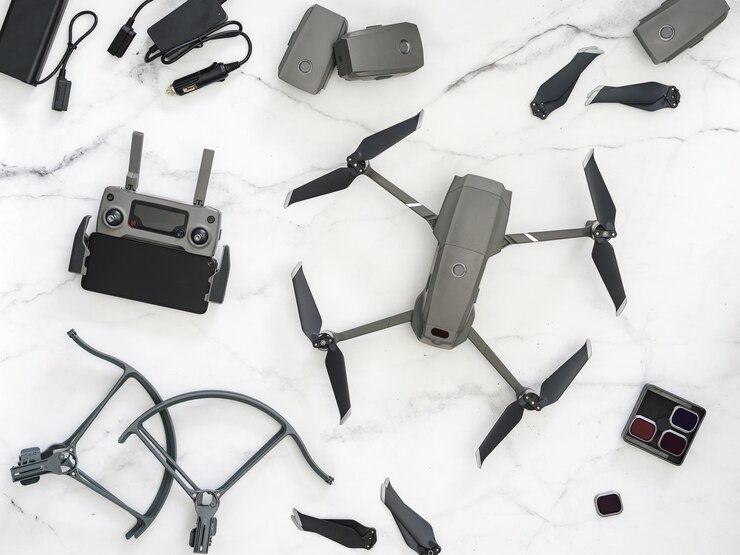
The three-speed settings and flight modes can self-correct in Turtle Mode and allow trainees to improve. We discovered that Normal is the most straightforward to fly, whereas Manual/Acro is the most challenging, needing precise control and throttle management.
FPV is the best option if you’re looking for a cheap method to try it out.
Key Features:
- Weight: 45.8g
- Maximum Flight time: 5 minutes
- Transmission Range: 80m
Camera:
- N/A
Pros:
- Affordable FPV kit
- Sturdy construction quality
Cons:
- Short battery life
- Inability to take still or video pictures
Flying Tips for Beginners – Best Drones with Camera 2024
- Ensure a flat surface for takeoff and landing.
- Gradually increase the throttle during takeoff and descend slowly when landing.
- Practice basic movements like hovering, forward/backward flight, and turning.
- Start with slow and smooth movements to gain control.
- Maintain a safe altitude to avoid obstacles.
- Be aware of your drone’s maximum altitude limit.
- Avoid flying in strong winds, especially for beginners.
- Check weather conditions before flying.
Capturing Stunning Footage – Best Drones with Camera 2024
- Experiment with manual settings for better control.
- Adjust the white balance and exposure based on lighting conditions.
- Use the rule of thirds for balanced shots.
- Experiment with different angles and perspectives.
- Use slow and steady movements for cinematic shots.
- Practice smooth gimbal movements for stable footage.
Safety and Legal Considerations – Best Drones with Camera 2024
- Keep a safe distance from people, buildings, and aircraft.
- Follow manufacturer guidelines and instructions.
- Register your drone with the appropriate authorities.
- Use apps to check for no-fly zones before flying.
- Be aware of restricted areas near airports and government buildings.
Maintenance Guide – Best Drones with Camera 2024
- Follow charging guidelines to extend battery life.
- Store batteries in a cool, dry place.
- Keep your drone and camera lens clean.
- Use compressed air to remove debris.
- Calibrate sensors regularly.
- Check for firmware updates and follow troubleshooting guides.
Essential Accessories – Best Drones with Camera 2024
- Extra Batteries
- Carrying Case
- Propeller Guards
Learning Resources for Beginners – Best Drones with Camera 2024
- YouTube channels with beginner-friendly tutorials.
- Educational websites offering step-by-step guides.
- Enroll in online courses for in-depth learning.
- Look for courses covering both flying and photography.
- Join drone communities for advice and support.
Conclusion – Best Drones with Camera 2024
Drone photography is reaching a turning point, merging artistic expression with cutting-edge technology as we look to 2023 and 2024. The spectrum of drones with camera on the market accommodates photographers of all skill levels, from enthusiasts shooting their first airborne photos to experts producing stunning cinematic movies. With so many options, there’s bound to be the ideal drone for any goal and ability level.
FAQs – Best Drones with Camera 2024
What features should I prioritize when choosing a drone for beginners?
Focus on ease of flight, stability, and safety features.
Are there any legal requirements for flying drones?
Yes, registration is often required. Follow local regulations and respect no-fly zones.
Can beginners fly drones indoors?
It’s possible, but open spaces are recommended for practice.
How do I troubleshoot common drone issues?
Consult the user manual or ask questions on online forums for assistance.
What’s the average flight time for beginner drones?
Typically, it takes 15-30 minutes, depending on the model and conditions.
What weather conditions are best for flying a drone?
Calm days with minimal wind are ideal. Avoid rain and extreme temperatures.

